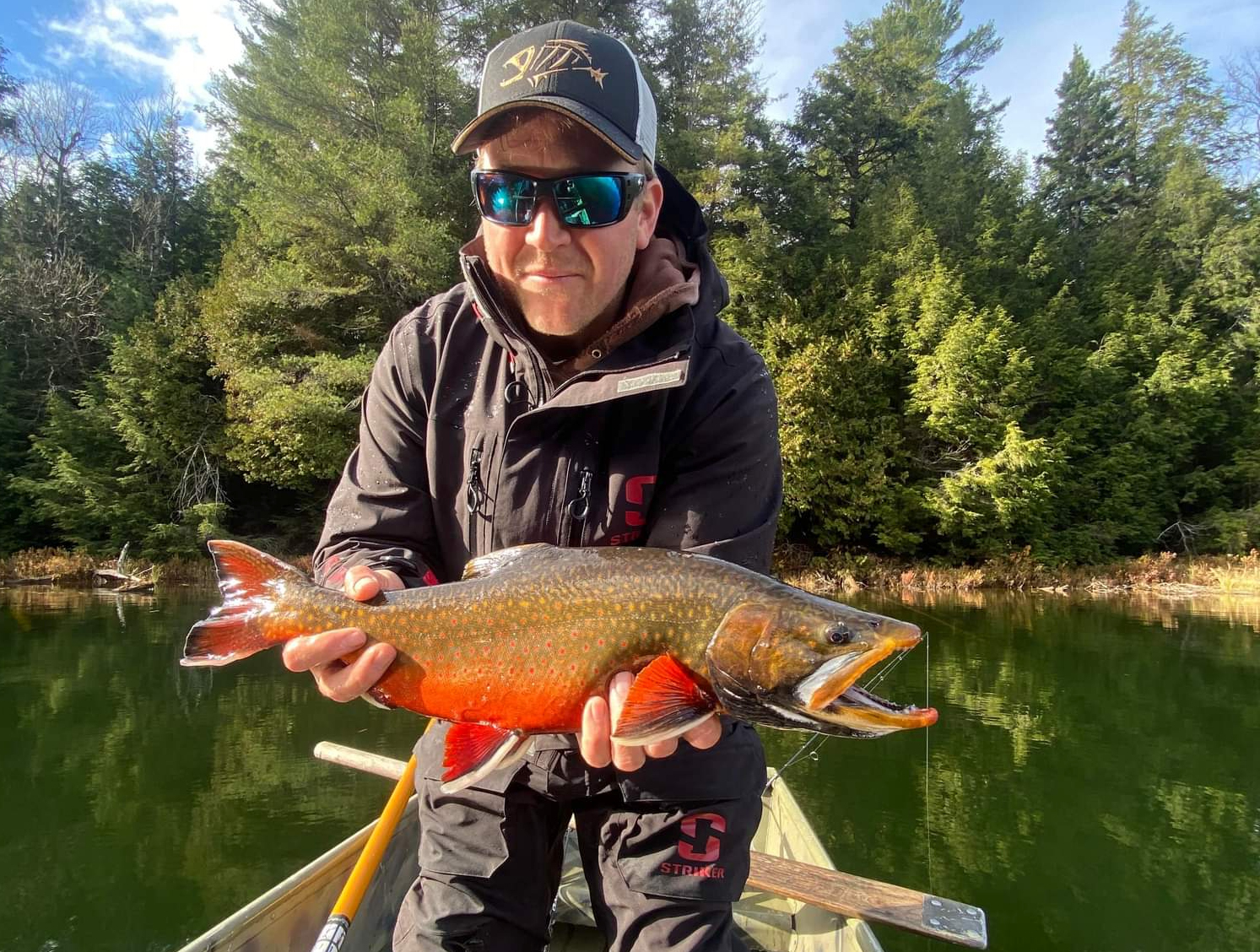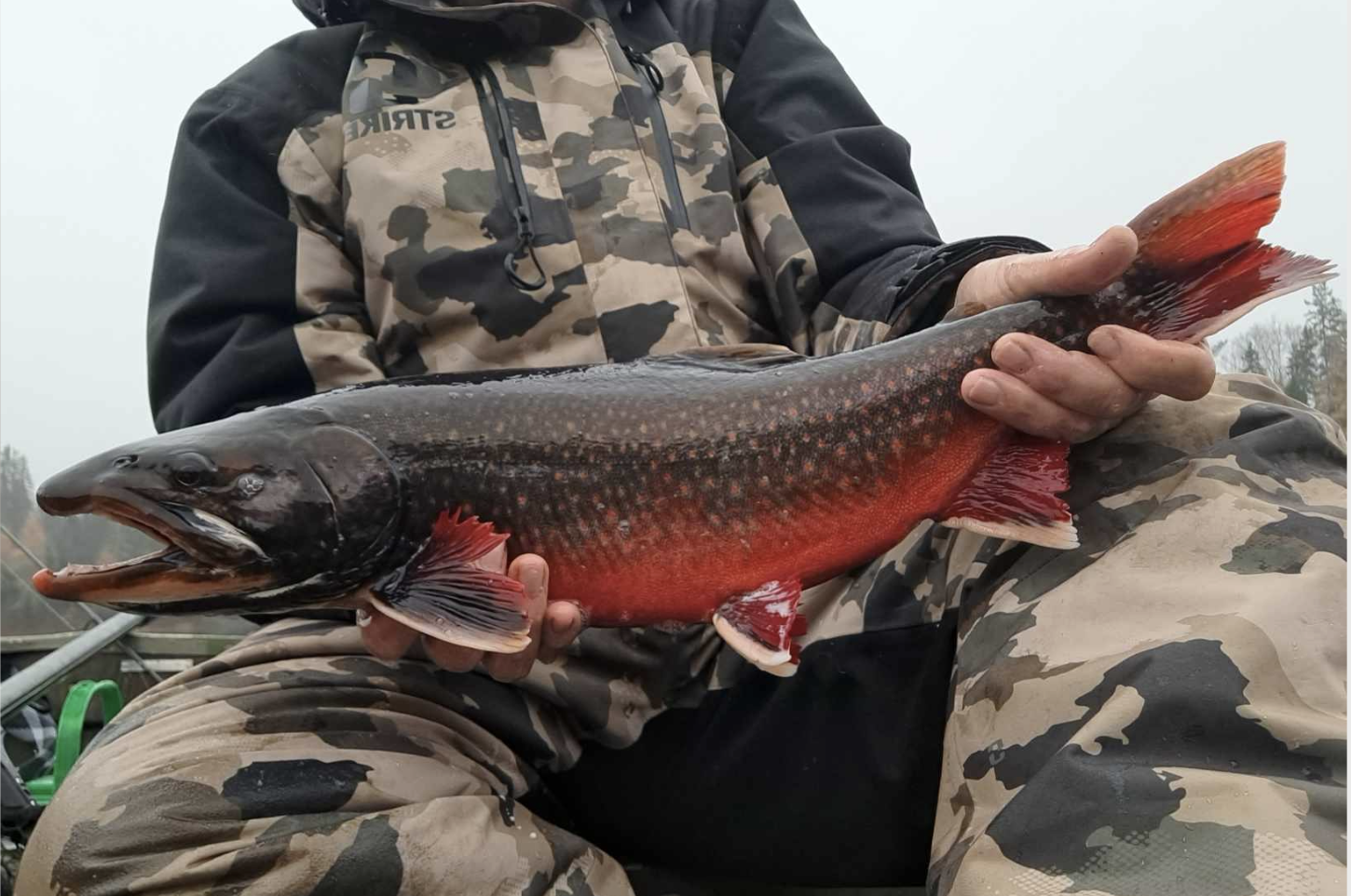SPLAKE-TACULAR FALL FISHING
Adapting a steelhead tactic for fall fishing in splake lakes
Advertisement
Growing up in the Trout Creek area, around North Bay, Ontario, Kaylan Evers says that he has long called October “Wall-tober,” because of the walleyes that he has typically chased in the nearby lakes like Nipissing. I am guessing that since the trout specialist has shifted his attention onto fall splake, that he may rename it Splake-tacular.
Advertisement
Kaylan has been sending me images of the splake he has been catching recently—especially the males that are all decked out in their fall spawning hues—and they’re mighty impressive.
“I grew up fishing a brook trout lake only ten minutes from home,” he says, “as well as the native brook trout creeks and rivers in the area. Truth of the matter is I have been chasing brookies since I could walk. I love the challenge, they’re gorgeous creatures with all of the halos and vermiculations.”
Living in a trout-rich part of the province—Evers says he fishes for them almost every day—allows him to venture a bit further north for the rare aurora trout, and a bit further south for steelhead and salmon. But it is the fall splake action that has taken centre stage of late and the way he has been catching them is interesting.
Advertisement
“My favorite fall splake tactic is using salmon roe under a float,” he says. “I learned how to float fish for steelhead in the tributaries flowing into Lake Ontario, and figured I may as well try the same tactic in the splake lakes close to home. It has landed me some dandy brookies as well. Funny thing, though, it’s never produced in the lakes for rainbows.
Advertisement
“I change very little of my (steelhead) approach when I am targeting lake-dwelling splake. I use the same 12′ 6″ Shimano Clarus steelhead rod and 2500 series Stradic reel, spooled with eight-pound test Power Pro. I slide a small slip float up the line, add a micro swivel, six-pound test Seaguar fluorocarbon leader, #12 Daiichi hook and hand-tied mesh spawn sac.”
Fishing mostly from a canoe—or boat cached on one of the back lakes—Evers searches out shallow, wind-protected bays that feature rocky substrates and fallen trees along shore. Oh, yes, and bright polished spots that highlight where a male splake has cleaned the bottom to make a redd (or nest).
“They stick out pretty good, much like a bass bed,” says Evers, noting that since the fish are stocked fish and don’t reproduce, the season is open year-round. “I cast out the spawn sac and let the wind drift it along, the same way I let the current carry it in a river.
“I caught and released six or seven splake the other day fishing this way, and they averaged 21- to 24-inches long. I even caught the same male twice—it had a distinctive orange-tipped kype—on different sides of the same bay. They were really fired up.”
Being stocked in ever more lakes across the country, the speckled trout/lake trout hybrid grow big, brawny and beautiful in the fall. So, while the season may be closed in lakes sporting wild trout populations of natural trout species, it is often open—though always check local regulations beforehand—on the stocked waters.
“For many years, I missed out on the late-fall splake action,” chuckles Evers. “Now, walleyes go on the back burner.”


